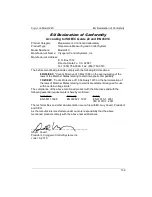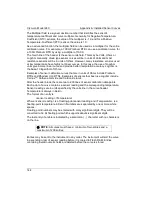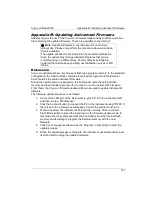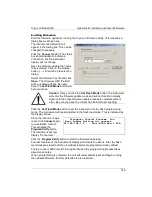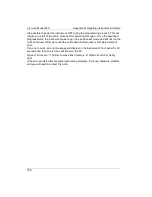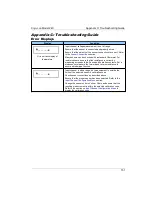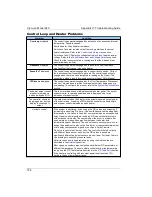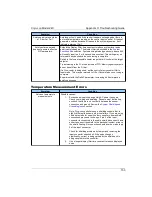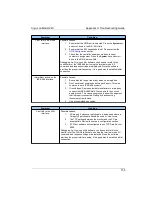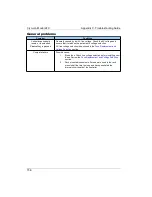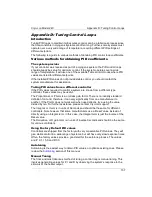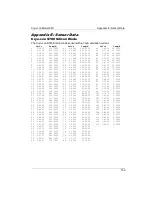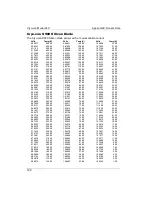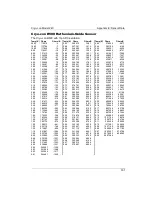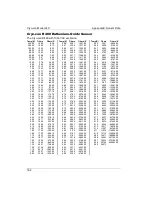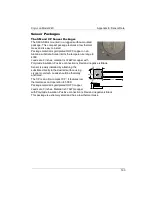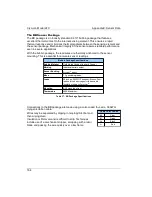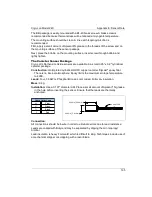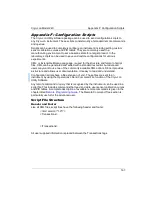
Cryo-con Model 24C
Appendix C: Troubleshooting Guide
Control Loop and Heater Problems
Symptom
Condition
Overtemp
displayed.
The control loops were disengaged by detection of an excessive internal
temperature. Possible causes:
Shorted heater. Check heater resistance.
Selection of a heater resistance that is much greater than the actual
heater resistance. Refer to the
Control Loop Setup menu
section.
Selection of an AC Power line voltage that is much less than the actual
voltage. Refer to the
Fuse Replacement and Voltage Selection
section.
Check that the instrument’s fan is running and that the sides and rear
panel allow easy air flow.
Readback
displayed.
The control loops were disengaged by the heater current read-back
monitor. Most likely cause is an open heater.
SensorFLT
displayed.
The control loops were disengaged by a sensor fault condition. Correct
the input sensor fault condition to proceed. The control loops will only
engage when there is a valid temperature reading on their input. The
exception is when a loop is assigned a control mode of Off or Manual.
OTDisconn
displayed.
The control loops were disengaged by the Over Temperature Disconnect
monitor. This was done to protect user equipment from damage due to
overheating. To configure the monitor, refer to the
System Functions Menu
section.
The heater output current
monitor is jumping up
and down by about 1%
This is normal and does not indicate unstable heater power. The output
current monitor is coarsely quantized and is displayed only for an
indication of proper function.
The controller should be
applying power, but the
display is showing 0%
output.
The output indicated on the display is the actual measured output power
of the control loop. A reading of 0% while the controller is attempting to
output power usually indicates an open heater.
Unstable control.
If the system is oscillating, try de-tuning the PID values by decreasing P,
increasing I and setting D to zero. If the oscillations cannot be stopped by
this procedure, the cause is likely that your system has an excessive time
delay. Linear control algorithms, including PID, cannot control systems
with excessive time delay. These problems often occur in systems that
use heat pipes, or depend on gas flow between the heater and
temperature sensor elements. The only solution to such systems is to re-
design the equipment to reduce the time delay, or to externally implement
a time delay compensation algorithm, such as a Smith Predictor.
Do not try to control on Ohms or Volts. The controller will work correctly
with either of these sensor units, but the PID values required are
significantly different and most sensors are non-linear. Furtherer, there is
no advantage to controlling in sensor units.
Optimize the control loop parameters by using the Autotune feature
described in the
Autotuning
section.
Most cryogenic systems require significantly different PID parameters at
different temperatures. To ensure stable control over a wide temperature
range, use the PID Table feature described in the
PID Table Entry
section.
If the heater is controlling with an output power level less than 10%,
switch to the next lower heater range.
152


